The MSI Gaming Booth Tour with dGPUs in AIOs and Notebooks plus Motherboards
by Ian Cutress on June 29, 2015 3:00 PM ESTAnother vector in the PC space that has been gaining attention and growth recently is the concept of small form factor devices, either to be used as office machines, portals to the web or as gaming devices. With the rise of tablets and Chromebooks eating into the low end portable market, Intel introduced the NUC (to which Gigabyte and Zotac have their own variants) to provide a small device that could also be mounted on the back of a monitor but still had full performance of a Core based PC. A step up from that and we have mini-ITX PCs, but for some this is still too big, especially when we throw potential Steamboxes into the mix. That is when we get devices like the ASUS GR8 and GR6 that fit into a bookshelf, or the MSI Nightblade designed to be a shoebox PC. For Computex, MSI is introducing the Nightblade Mi.
Nightblade Mi
Not to be confused with anything from Xiaomi, or Nintendo based avatars, the Nightblade Mi is the bookshelf-sized sibling of the Nightblade.
The Mi is barely taller than a standard half-liter water bottle and is similarly designed like the Nightblade to house a full motherboard, CPU and discrete graphics card. Behind the scenes, we got a closer look at the internals.
The system uses smaller components where possible, and MSI stated that they’re not too concerned with the color scheme internally at this point as the Mi is designed to be slightly hidden away and blend into home décor.
A full mini-ITX motherboard is used with a laptop-oriented style blower fan with heatpipes. The fan should be able to handle 88W-95W of CPU power, although MSI recommends against overclocking in such a small form factor. The blower sits below the GPU, so airflow through these areas is important. From the top of this image we can see the ability for a dual slot GPU to be inserted.
The GPU arrangement is provided by a PCIe 3.0 x16 riser card with the dimensions allowing even a Titan X into the mix. The power supply is the crucial element here, and if I remember correctly then this is a 450W 80PLUS Silver design derived from the server market.
MSI has designed the system to take a single 2.5-inch SSD on the top:
There is space for two 3.5-inch drives (or two 2.5-inch) to be slotted into a mini-backplane, also accessible from the top.
As far as I understand, MSI will be offering the system as a barebones for end-users or as an OEM to system integrators who can add in their own components, do custom design choices and then sell on as a unique part in their lineup. Personally I told MSI that the aim here should be for a $600 total build, perhaps with an i3 and a GTX 960/R9 285, because ultimately this price range and market segment attracts the under-25s more than anything else. Under-25s typically play eSports based titles, which do not require super machines to play, but also their budgets are smaller by virtue of schooling or entry level jobs, meaning that $600 for a system build is not unreasonable, but they certainly are not paying $1500+ (except for the odd one or two). MSI is going to be launching the Mi with a focus on Skylake, so we’ll wait and see how it permeates through the distribution channels then.
MSI Cubi
At the top of the page we mentioned the Intel NUC and the counterparts that play in the mini-PC space, such as the GIGABYTE BRIX, ECS LIVA and the Zotac array of mini-PCs. Cubi is MSI’s attempt to enter this space, using a custom 4-inch x 4-inch design.
MSI told me that their focus with these devices, based on Atom initially, is to enter the PC-on-monitor implementations similar to the NUC. When entering this market, the application in marketing to the verticals is important, such as education, government, health and others such as business, and with each segment comes a list of requirements. Most prominent on that list is typically vPro, allowing remote admin access to system configurations and site-wide deployment of updates. This is the market MSI is aiming for.
The configuration of the Cubi models on show focus on HDMI, Ethernet, DisplayPort and USB 3.0 with integrated wireless and support for two SO-DIMMs and a 2.5-inch drive. MSI was asking about whether 4 inches by 4 inches was optimal, or if a 5x5 arrangement also fit into this space. Note that VESA mounting is 75x75mm or 100x100mm, so having a 5-inch by 5-inch design wouldn’t hurt the segments that MSI is aiming for unless the monitors used placed the stand in the VESA mount, and the larger size would interfere with the stand.
Initial Cubi designs should be based around Atom, though I suspect we will see Core based versions, either at this thickness or slightly more, in the future. Whether that’s Core M or Pentium/Celeron has not been specified.


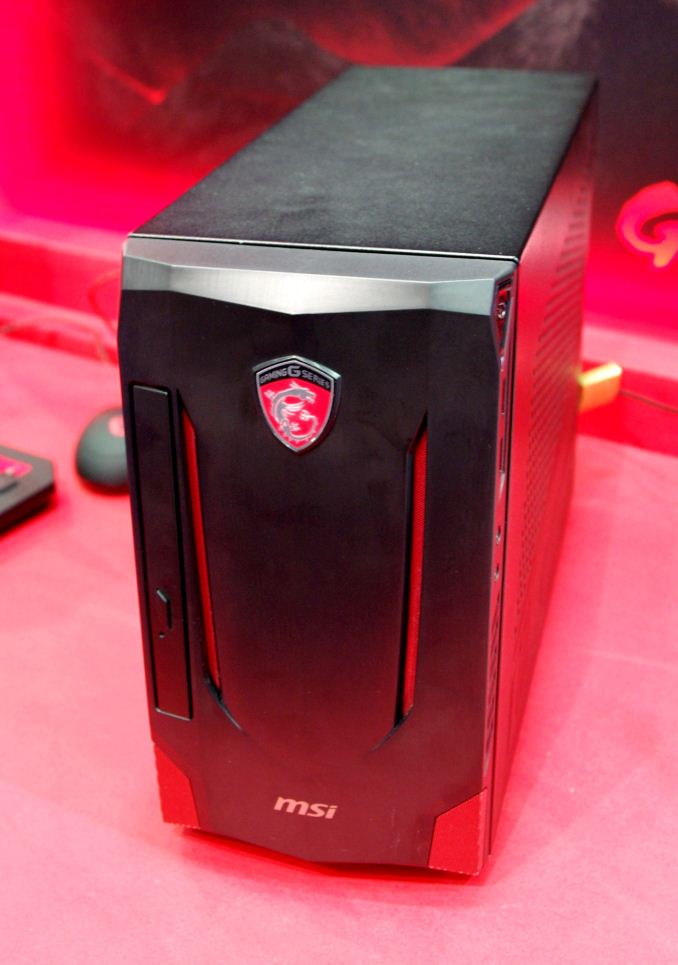
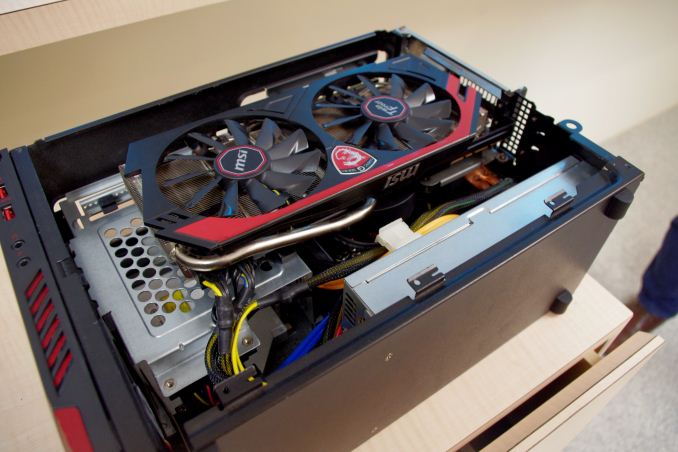
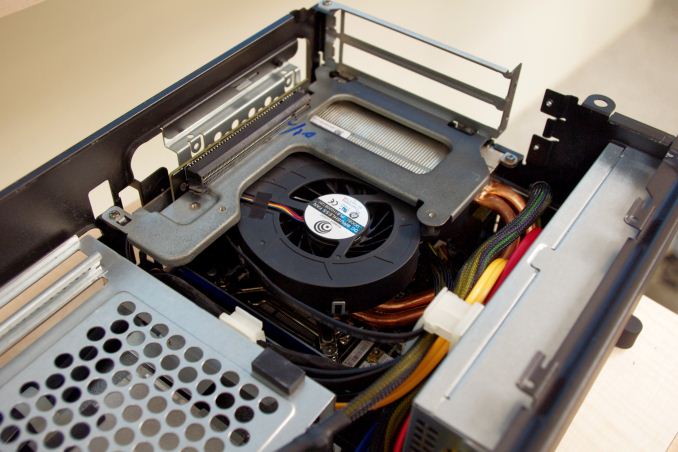

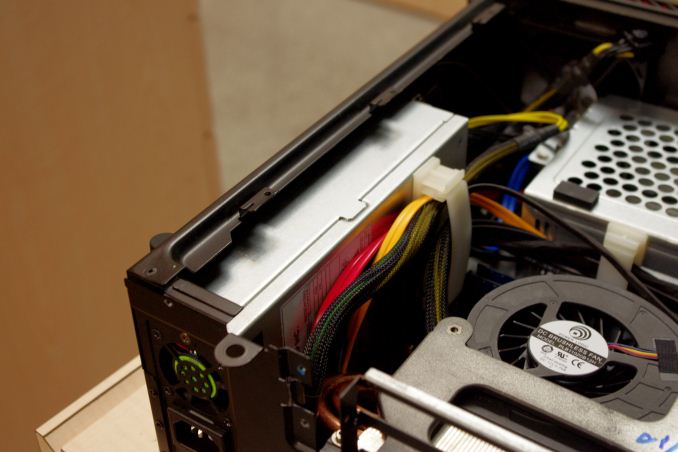
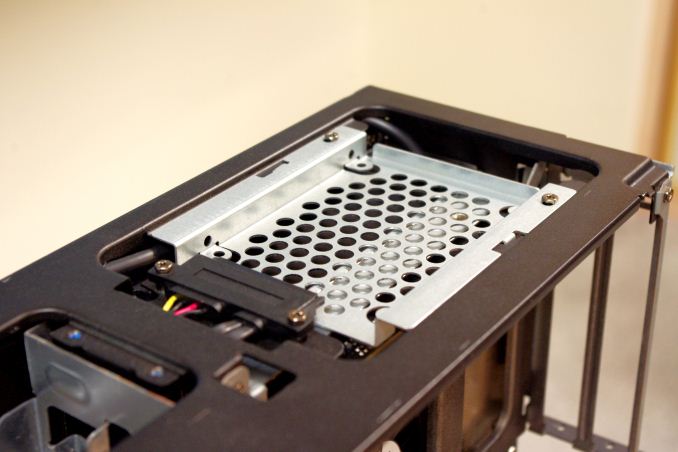


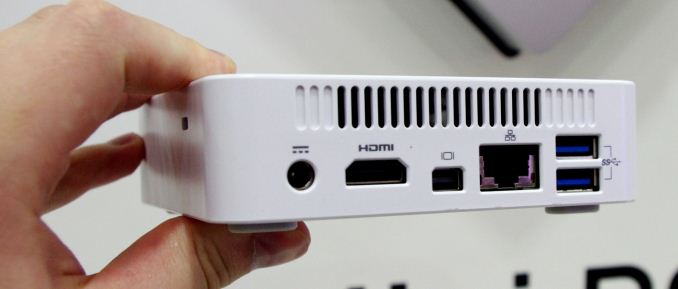








50 Comments
View All Comments
medi03 - Tuesday, June 30, 2015 - link
Fanobi Bullshit.In fall 2013 $399 R9 290 was on par nVidias $999 GTX Titan.
R9 290X was the fastest single card GPU (550$) until 780 Titan (699$).
It's still damn good bung for the buck card, staying within 10% of nVidia's card that costs nearly twice as much.
Fury X is whole new story, 1199$ crossfire beating 1998$ Titan X SLI.
And then there is $599 R9 295x2, which wipes the floor with any single card out there in pretty much any game that wasn't released just yesterday.
Antronman - Sunday, July 5, 2015 - link
Ti stands for titanium.Shadow7037932 - Tuesday, June 30, 2015 - link
Mining on GPUs has been dead for quite a long time, esp. with ASICs available now.will1956 - Thursday, July 9, 2015 - link
i've gotten a sapphire 7870 GHz OC and was waiting for the Fury (hoping they would release a air cooled version) but now not a chance. i'm getting the 90 Ti.I've got a Silverstone FT03 with a H80i so the water cooling kinda throw it out
will1956 - Thursday, July 9, 2015 - link
*980 Ti.TheJian - Monday, June 29, 2015 - link
You're on 12 gpu related articles in the last 30 days (only one shared with brett), but can't manage a 300 series article for two weeks (and it's written BEFORE launch to up it at NDA release etc correct?) or FuryX article for AMD's two major launches this summer (and sick in summer, sorta odd). That's a pretty big pill to swallow. Quick, someone give me a Heimlich, I'm choking... ;)Still time to respond to comments too...Tweet etc...but a major review of a HUGE launch (considering the hype that is...seems like no fury at this point, no new era of gaming either) can wait for a week, never mind the 300's ignored too. Ok...
Having said that I did notice Jarred now works at maximumpc...Pretty much insinuated AMD is shoveling them around so fast so nobody can thoroughly vet the card. Ouch.
http://www.maximumpc.com/amd-radeon-fury-x-review/
"We received a card for benchmarking… sort of. The whole of Future US, which includes Maximum PC, PC Gamer, and TechRadar, among others, received one Fury X for testing. We asked for a second, since our GPU testing is done at a different location, but to no avail."
It gets worse, even mentioning others, and only 10 samples for all of europe which according to him is really odd. Not sure why people keep turning hairworks off when it's just amping up tessellation (ok, may notch it down from 64, but off? Developer wanted us to use it) which happens to run REALLY fast on maxwell. How many other games will use tessellation like this in the future?
https://techreport.com/review/28513/amd-radeon-r9-...
See Beyond3d benchmarks. Hairworks won't be the only thing doing this I'd say.
"The Fury X still manages just over half the throughput of the GTX 980 Ti in TessMark. "
Same with Polygon throughput. There are others amd leads in, but this surely shows it isn't Hairworks doing in AMD on witcher3 (or nasty stuff from project cars etc), AMD will just hurt in some stuff period as will NV I guess, but NV seems to get the best of AMD as far as what devs are really doing. Should we be turning stuff off to hide AMD's gpu issues? Would we turn down AMD stuff that highlighted their efficiency in some aspect?
As techreport says:
"At the end of the day, the results from these directed tests largely confirm the major contrasts between the Fury X and the GeForce GTX 980 Ti. These two solutions have sharply divergent mixes of resources on tap, not just on paper but in terms of measurable throughput."
Why hide it when it shows for either? Gamers should know how data like this plays in the real world. It would appear games like Project Cars, WOW Warlords of Draenor, Witcher 3 (with hairworks on, IE tessellation up), Wolfenstein New Order, COD Adv Warfare, Dragon Age Inq etc show some of AMD's weaknesses (games showing ~20% advantage here basically even at 4K). AMD has a few themselves, but not as many and not this big of an advantage (mostly 1/2 NV's advantage in them meaning less than 10%). Some of them are losses at one site a win on another too, like Metro LL at toms a loss at 4K for NV, but win at techpowerup etc.
"The game uses DirectX 11 without the conventional approach to tessellation. It uses a deferred rendering engine with a custom Ambient Occlusion technique."
Techpowerup's comment on tessellation in project cars game. Again, this shows what I'm talking about. You can turn crap off to hide AMD sucking wind in some attribute. Are all of the games I mentioned doing some form of something we should turn off? NO.
https://www.techpowerup.com/reviews/AMD/R9_Fury_X/...
63fps vs. 45fps in project cars at 4K. Ouch. Dev wanted us to see their effects not turn them off because AMD sucks at it. At 1080p/1440p the gap gets to 20% on more than I listed (GTA5 etc). Wolfenstein doing something too with Id's Tech5 engine (over 20% to, and even 970 topples FuryX in 1440p and lower). Even 980 beats FuryX at 4K. Really the discussion should focus on 1440p since 95% of us are at or below this, which is even worse in these games and adds more, and this is all before OCing (which adds games like thief at 4K etc at 21% for NV). Devs will more often than not program for 75% share vs. 25% (AMD) too and more often then not, just because that is what they are designing on (75-80% of the workstation market owned too, game designers etc).
Back to your comment though, a 390x/FuryX release are clickbait articles you aren't interested in? ;) Your excuse is humorous at best, never mind what it is at worst. D. Lister, Chizow etc are correct. Can't wait for the clickbait FuryX article :) Hard to believe you put up a dozen gpu articles in a month but FuryX couldn't get the time of day over one of them...LOL.
nightbringer57 - Tuesday, June 30, 2015 - link
Well, a fast and hastened article to meet the deadline at any price would be kind of clockbait.When the dedicated reviewer is not available, it's quite honorable to give up the hype deadline and wait until he's well and ready to give us the great article we will certainly have.
mmrezaie - Tuesday, June 30, 2015 - link
Thanks Ryan. I would prefer to have better in depth review than an ad like article. So get better soon.D. Lister - Tuesday, June 30, 2015 - link
Ah, well then, the silver lining maybe a more in-depth analysis, considering the absence of a strict deadline. Get well soon mate.just4U - Wednesday, July 1, 2015 - link
One thing I'd like to see in a video card review right now is 2 390s (not x) in crossfire.. no one has done that yet and they look to be a very solid choice for 4k Gaming on price/performance.On topic. I've been using a lot of MSI stuff of late. Really like how the company is handling things these days.. I do wonder if they got their support up to par. That used to be a issue with them.